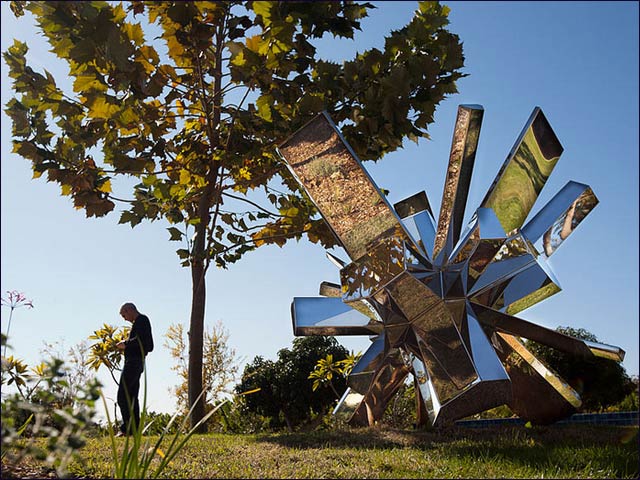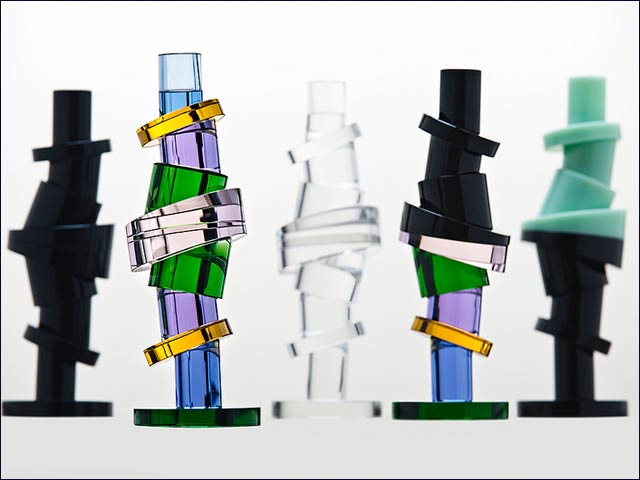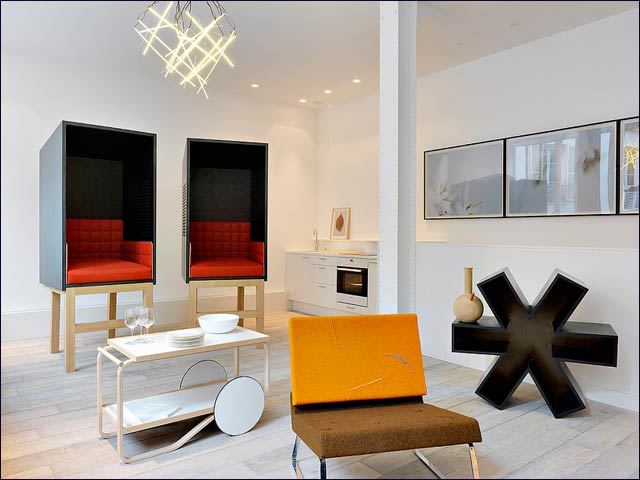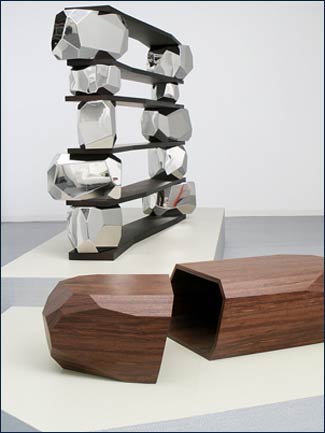By Avigayil Kadesh
The world can thank Arik Levy’s tough old grandpa for the eclectic industrial designer’s start in a spectacularly successful career.
“My grandfather had an electrical appliances shop in Tel Aviv and encouraged me to build and make things, from the time I was about eight years old,” Levy says in an interview from his Paris studio. “I presented my ideas and models to him, and I would get very strong criticism. It was a good life lesson.”

Levy with Rock Growth, made of mirror-polished
stainless steel, part of a private collection in Israel.
Photo by Shauli LandnerAt the time of our conversation, Levy had three shows going on in different parts of the world: “Experimental Growth” at the Bisazza Foundation for Design and Contemporary Architecture in Italy; “Genetic Intimacy” at Alon Segev Gallery in Tel Aviv; and “Nothing is Quite as it Seems” in Paris, a major retrospective and prospective exhibition tracing Levy’s winding creative path since his first show in 1986, at the Jaffa Port. Earlier in 2012, his work was featured in London, San Francisco and Geneva.
The Paris exhibit coincided with the launch of his new book, Out There, a 264-page public look at privately commissioned outdoor environmental works that enhance gardens and galleries in several countries.
It’s impossible to pigeonhole Levy. He simultaneously churns out works of photography, film, sculpture, painting, furniture and lighting. He conceptualizes high-tech clothing and accessories for firms in the Far East, and recently accepted a request to design toys for a major South Korean manufacturer.

Levy’s Double Herkimer, made of optical glass.
Photo by Necati Ufuk BaskirBack in the early 1970s, when he was tinkering in Grandpa’s repair shop, Levy had no designs on an artistic career. “I was not even aware of the word ‘design’ and I was just making things to improve my everyday life,” he says in English, one of four languages in which the Tel Aviv native is proficient.
Beach bum
A passionate wind surfer, Levy began by designing surfboards, wetsuits and leashes – in fact, the thousands of surfboard leashes he produced before and after his military service paid for his university education after he closed his surf shop and graphic design shop in Tel Aviv.

Levy’s Contemporary Domestic Confessional
installed at the Slott Gallery, Paris.
Photo by Florian KleinefennHappy as Levy was being a beach bum, as he describes it, he realized what he was doing wouldn’t pay the bills long term. And anyway, his then-girlfriend was off to study in Geneva and he wanted to tag along. So in 1988, at the age of 25, he turned down an acceptance to the prestigious Bezalel Academy of Arts and Design in Jerusalem. He had learned of a new Swiss satellite of the Art Center of Pasadena, and sent his girlfriend there with his portfolio.
“I told her to tell them I am coming. I used all my Israeli chutzpah and I got accepted and started immediately,” Levy recalls.
Despite struggles with dyslexia, he graduated with distinction in industrial design in 1991 and then traveled to Japan to consolidate his ideas. Returning to Europe, he first worked in set design for contemporary dance. Eventually he settled in Paris, where today his multifaceted career is organized loosely into three areas: artwork, industrial design and social benefit design. “I specialize in not specializing,” he quips.

RockShelves and RockSplit, Levy’s designs
in the HSBC Private Bank Designers Lounge
at the Miami Beach Golf Club.
Photo by Richard PattersonTo exist in the next second
His parents remain in Israel and he says he never decided to leave his homeland as much as to follow his heart to Europe. Though the young lovers eventually broke up, Levy today lives with a French artist and their two young children. He also has a 17-year-old son in Paris from a previous relationship.
“I started making my way in Paris, and Paris became home,” he explains. “I didn’t speak a word of French, Italian or anything else [besides Hebrew], and my English was less than mediocre, so I had a lot to catch up with. Now I’m fluent in all of those because life forced me to be.”
However, he adds, being Israeli “is part of my cultural, geographic and social identity, which is part of my DNA and cannot be changed.”
Levy was profoundly influenced by his surroundings as a child. His home in Tel Aviv was not far from sand dunes, while today it’s in the center of a bustling downtown metropolis. “I literally lived the transition of Tel Aviv from town to city, every day.”
Yet he thinks of himself more as a Jewish artist.
“When you are part of a group of people in a state of distress and survival, you are forced to have a certain kind of creativity and be able to reinvent yourself nearly daily. Jews throughout history, and Israelis, have a special ‘spring’ that permits us to rebound at every moment. We do what we always did, but do it differently in order to exist in the next second.”